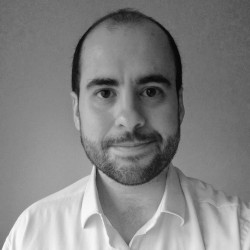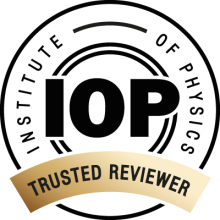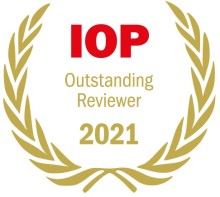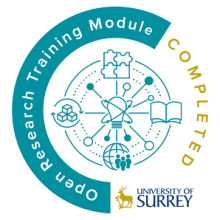
Dr Jesús Rubio
About
Biography
Jesús Rubio is a Theoretical Physicist and a Surrey Future Fellow. Following his studies for the Spanish Baccalaureate, he completed a Licenciatura degree at the Complutense University of Madrid and a MSc at the Institute for Theoretical Physics of Madrid, specialising in particle physics, cosmology and quantum information theory. He was then awarded a SEPnet scholarship to study for a doctorate at the University of Sussex. There, he wrote a thesis on quantum optics and Bayesian metrology, supervised by Jacob Dunningham. Upon receiving his PhD in 2019, he joined the group of Janet Anders at the University of Exeter as a postdoc. During this time, he developed global thermometry as a new subfield of quantum thermodynamics. In 2022, Jesús was awarded a Surrey Future Fellowship and he is now based at the University of Surrey. His research on quantum sensing, metrology and estimation aims to exploit quantum technologies as a new framework to formulate and answer fundamental questions in physics.
Areas of specialism
Affiliations and memberships
ResearchResearch interests
Measurements allow us to interrogate nature. Progress in the foundations of physics thus demands a theory of measurements suitable for regimes where fundamental physics comes into play. To this end, I am developing the theory of a universally applicable framework for quantum metrology and estimation. Relevant themes include:
Quantum science and foundations
- Quantum metrology in exotic regimes
- Quantum inference à la Bayes, with a particular emphasis on variational principles, multiparameter estimation, uncertainty relations, and fluctuation theorems
- Quantum light, thermodynamics, and relativity
Quantum information technologies
- Principles of quantum sensing with applications in interferometry, thermometry, imaging, and general-purpose networks of sensors
- Physics-inspired data science, quantum and beyond
Research interests
Measurements allow us to interrogate nature. Progress in the foundations of physics thus demands a theory of measurements suitable for regimes where fundamental physics comes into play. To this end, I am developing the theory of a universally applicable framework for quantum metrology and estimation. Relevant themes include:
Quantum science and foundations
- Quantum metrology in exotic regimes
- Quantum inference à la Bayes, with a particular emphasis on variational principles, multiparameter estimation, uncertainty relations, and fluctuation theorems
- Quantum light, thermodynamics, and relativity
Quantum information technologies
- Principles of quantum sensing with applications in interferometry, thermometry, imaging, and general-purpose networks of sensors
- Physics-inspired data science, quantum and beyond
Teaching
I am currently the Module Leader for Advanced Quantum Mechanics (PHYM072) within the MSc in Applied Quantum Computing.
Publications
We present a comprehensive and pedagogical formulation of Bayesian multiparameter quantum estimation, providing explicit conditions for achieving minimum quadratic losses. Within this framework, we analyse the role of measurement incompatibility and establish its quantitative effect on attainable precision. We achieve this by deriving upper bounds based on the pretty good measurement—a notion originally developed for hypothesis testing—combined with the evaluation of the Nagaoka–Hayashi lower bound. In general, we prove that, as in the many-copy regime of local estimation theory, incompatibility can at most double the minimum loss relative to the idealised scenario in which individually optimal measurements are assumed jointly implementable. This result implies that, in many practical situations, the latter may provide a sufficient and computationally efficient benchmark without solving the full optimisation problem. Our results, which we illustrate through a range of applications, including discrete quantum phase imaging, phase and dephasing estimation, and qubit sensing, provide analytical and numerical tools for assessing ultimate precision limits and the role of measurement incompatibility in Bayesian multiparameter quantum metrology. We also provide an open-source package that implements all bounds discussed here, enabling practical evaluation and comparison across quantum metrological models.
Global quantum sensing enables parameter estimation across arbitrary ranges with a finite number of measurements. Among the various existing formulations, the Bayesian paradigm stands as a flexible approach for optimal protocol design under minimal assumptions. Within this paradigm, however, there are two fundamentally different ways to capture prior ignorance and uninformed estimation; namely, requiring invariance of the prior distribution under specific parameter transformations, or adhering to the geometry of a state space. In this paper we carefully examine the practical consequences of both the invariance-based and the geometry-based approaches, and show how to apply them in relevant examples of rate and coherence estimation in noisy settings. We find that, while the invariance-based approach often leads to simpler priors and estimators and is more broadly applicable in adaptive scenarios, the geometry-based one can lead to faster posterior convergence in a well-defined measurement setting. Crucially, by employing the notion of location-isomorphic parameters, we are able to unify the two formulations into a single practical and versatile framework for optimal global quantum sensing, detailing when and how each set of assumptions should be employed to tackle any given estimation task. We thus provide a blueprint for the design of novel high-precision quantum sensors.
Global sensing enables parameter estimation across arbitrary parameter ranges with a finite number of shots. While various formulations exist, the Bayesian paradigm offers a flexible approach to optimal protocol design under minimal assumptions. However, there are several sets of assumptions capturing the notions of prior ignorance and uninformed estimation, leading to two main approaches: invariance of the prior distribution under specific parameter transformations, and adherence to the geometry of a state space. While the first approach often leads to simpler priors and estimators and is more broadly applicable in adaptive settings, the second can lead to faster posterior convergence in a well-defined measurement setting. We examine the practical consequences of both approaches and show how to apply them in examples of rate and coherence estimation in noisy scenarios. More importantly, by employing the notion of location-isomorphic parameters, we unify the two approaches into a practical and versatile framework for optimal global quantum sensing, detailing when and how each set of assumptions should be employed—a blueprint for the design of quantum sensors.
J. Chem. Theory Comput. 2024, 20, 385-395 The tunable design of protein redox potentials promises to open a range of applications in biotechnology and catalysis. Here we introduce a method to calculate redox potential changes by combining fluctuation relations with molecular dynamics simulations. It involves the simulation of reduced and oxidized states, followed by the instantaneous conversion between them. Energy differences introduced by the perturbations are obtained using the Kubo-Onsager approach. Using a detailed fluctuation relation coupled with Bayesian inference, these are post-processed into estimates for the redox potentials in an efficient manner. This new method, denoted MD+CB, is tested on a de novo four-helix bundle heme protein (the m4D2 `maquette') and five designed mutants, including some mutants characterized experimentally in this work. The MD+CB approach is found to perform reliably, giving redox potential shifts with reasonably good correlation (0.85) to the experimental values for the mutants. The MD+CB approach also compares well with redox potential shift predictions using a continuum electrostatic method. The estimation method employed within the MD+CB approach is straightforwardly transferable to standard equilibrium MD simulations, and holds promise for redox protein engineering and design applications.
The tunable design of protein redox potentials promises to open a range of applications in biotechnology and catalysis. Here we introduce a method to calculate redox potential changes by combining fluctuation relations with molecular dynamics simulations. It involves the simulation of reduced and oxidized states, followed by the instantaneous conversion between them. Energy differences introduced by the perturbations are obtained using the Kubo-Onsager approach. Using a detailed fluctuation relation coupled with Bayesian inference, these are post-processed into estimates for the redox potentials in an efficient manner. This new method, denoted MD+CB, is tested on a de novo four-helix bundle heme protein (the m4D2 ‘maquette’) and five designed mutants, including some mutants characterized experimentally in this work. The MD+CB approach is found to perform reliably, giving redox potential shifts with reasonably good correlation (0.85) to the experimental values for the mutants. The MD+CB approach also compares well with redox potential shift predictions using a continuum electrostatic method. The estimation method employed within the MD+CB approach is straightforwardly transferable to standard equilibrium MD simulations, and holds promise for redox protein engineering and design applications.
Combining quantum and Bayesian principles leads to optimality in metrology, but exact solutions can be hard to find. This work mitigates this problem with a novel class of exactly solvable optimisation equations. For any quantity isomorphic to a location parameter, rules to devise optimal measurements are given in closed form. These are valid for any parameter range, prior information, or state, and the associated estimators apply to finite samples. This framework unifies the metrology of locations, scales, and other parameter types such as relative weights, for which hyperbolic errors are required. But the central advantage lies on its simplifying power: searching for good strategies amounts to identifying which symmetry leaves a state of maximum ignorance invariant, irrespective of error bounds. This reduces the number of calculations needed in practice and enables the rigorous application of quantum metrology to fundamental physics, where symmetries play a key role.
Combining quantum and Bayesian principles leads to optimality in metrology, but the optimization equations involved are often hard to solve. This Letter mitigates this problem with a class of measurement strategies for quantities isomorphic to location parameters, which are shown to admit a closed-form optimization. The resulting framework admits any parameter range, prior information, or state, and the associated estimators apply to finite samples. As an example, the metrology of relative weights is formulated from first principles and shown to require hyperbolic errors. The primary advantage of this approach lies in its simplifying power: it reduces the search for good strategies to identifying which symmetry leaves a state of maximum ignorance invariant. This will facilitate the application of quantum metrology to fundamental physics, where symmetries play a key role. Published by the American Physical Society 2024
Bayesian methods promise enhanced device performance and accelerated data collection. We demonstrate an adaptive Bayesian measurement strategy for atom number estimation in a quantum technology experiment, utilising a symmetry-informed loss function. Compared to a standard unoptimised strategy, our method yields a five-fold reduction in the fractional variance of the atom number estimate. Equivalently, it achieves the target precision with 40% fewer data points. We provide general expressions for the optimal estimator and error for any quantity amenable to symmetry-informed strategies, facilitating the application of these strategies in quantum computing, communication, metrology, and the wider quantum technology sector.
PhD thesis, University of Sussex (2020) The number of times that we can access a system to extract information via quantum metrology is always finite, and possibly small, and realistic amounts of prior knowledge tend to be moderate. Thus theoretical consistency demands a methodology that departs from asymptotic approximations and restricted parameter locations, while practical convenience requires that it is also flexible and easy to use in applications with limited data. We submit that this methodology can and should be built on a Bayesian framework, and in this thesis we propose, construct, explore and exploit a new non-asymptotic quantum metrology. First we show the consistency of taking those solutions that are optimal in the asymptotic regime of many trials as a guide to calculate a Bayesian measure of uncertainty. This provides an approximate but useful way of studying the non-asymptotic regime whenever an exact optimisation is intractable, and it avoids the non-physical results that can arise when only the asymptotic theory is used. Secondly, we construct a new non-asymptotic Bayesian bound without relying on the previous approximation by first selecting a single-shot optimal quantum strategy, and then simulating a sequence of repetitions of this scheme. These methods are then applied to a single-parameter Mach-Zehnder interferometer, and to multi-parameter qubit and optical sensing networks. Our results provide a detailed characterisation of how the interplay between prior information, correlations and a limited amount of data affects the performance of quantum metrology protocols, which opens the door to a vast set of unexplored possibilities to enhance non-asymptotic schemes. Finally, we provide practical researchers with a numerical toolbox for Bayesian metrology, while theoretical workers will benefit from the broader and more fundamental perspective that arises from the unified character of our methodology.
A longstanding problem in quantum metrology is how to extract as much information as possible in realistic scenarios with not only multiple unknown parameters, but also limited measurement data and some degree of prior information. Here we present a practical solution to this: We derive a Bayesian multi-parameter quantum bound, construct the optimal measurement when our bound can be saturated for a single shot, and consider experiments involving a repeated sequence of these measurements. Our method properly accounts for the number of measurements and the degree of prior information, and we illustrate our ideas with a qubit sensing network and a model for phase imaging, clarifying the nonasymptotic role of local and global schemes. Crucially, our technique is a powerful way of implementing quantum protocols in a wide range of practical scenarios that tools such as the Helstrom and Holevo Cramer-Rao bounds cannot normally access.
The theoretical framework for networked quantum sensing has been developed to a great extent in the past few years, but there are still a number of open questions. Among these, a problem of great significance, both fundamentally and for constructing efficient sensing networks, is that of the role of inter-sensor correlations in the simultaneous estimation of multiple linear functions, where the latter are taken over a collection local parameters and can thus be seen as global properties. In this work we provide a solution to this when each node is a qubit and the state of the network is sensor-symmetric. First we derive a general expression linking the amount of inter-sensor correlations and the geometry of the vectors associated with the functions, such that the asymptotic error is optimal. Using this we show that if the vectors are clustered around two special subspaces, then the optimum is achieved when the correlation strength approaches its extreme values, while there is a monotonic transition between such extremes for any other geometry. Furthermore, we demonstrate that entanglement can be detrimental for estimating non-trivial global properties, and that sometimes it is in fact irrelevant. Finally, we perform a non-asymptotic analysis of these results using a Bayesian approach, finding that the amount of correlations needed to enhance the precision crucially depends on the number of measurement data. Our results will serve as a basis to investigate how to harness correlations in networks of quantum sensors operating both in and out of the asymptotic regime.
A paradigm shift in quantum thermometry is proposed. To date, thermometry has relied on local estimation, which is useful to reduce statistical fluctuations once the temperature is very well known. In order to estimate temperatures in cases where few measurement data or no substantial prior knowledge are available, we build instead a method for global quantum thermometry. Based on scaling arguments, a mean logarithmic error is shown here to be the correct figure of merit for thermometry. Its full minimization provides an operational and optimal rule to postprocess measurements into a temperature reading, and it establishes a global precision limit. We apply these results to the simulated outcomes of measurements on a spin gas, finding that the local approach can lead to biased temperature estimates in cases where the global estimator converges to the true temperature. The global framework thus enables a reliable approach to data analysis in thermometry experiments.
Quantum metrology protocols are typically designed around the assumption that we have an abundance of measurement data, but recent practical applications are increasingly driving interest in cases with very limited data. In this regime the best approach involves an interesting interplay between the amount of data and the prior information. Here we propose a new way of optimising these schemes based on the practically-motivated assumption that we have a sequence of identical and independent measurements. For a given probe state we take our measurement to be the best one for a single shot and we use this sequentially to study the performance of different practical states in a Mach-Zehnder interferometer when we have moderate prior knowledge of the underlying parameter. We find that we recover the quantum Cramér-Rao bound asymptotically, but for low data counts we find a completely different structure. Despite the fact that intra-mode correlations are known to be the key to increasing the asymptotic precision, we find evidence that these could be detrimental in the low data regime and that entanglement between the paths of the interferometer may play a more important role. Finally, we analyse how close realistic measurements can get to the bound and find that measuring quadratures can improve upon counting photons, though both strategies converge asymptotically. These results may prove to be important in the development of quantum enhanced metrology applications where practical considerations mean that we are limited to a small number of trials.
Precise temperature measurements on systems of few ultracold atoms is of paramount importance in quantum technologies, but can be very resource intensive. Here, we put forward an adaptive Bayesian framework that substantially boosts the performance of cold atom temperature estimation. Specifically, we process data from real and simulated release-recapture thermometry experiments on few potassium atoms cooled down to the microkelvin range in an optical tweezer. From simulations, we demonstrate that adaptively choosing the release-recapture times to maximize information gain does substantially reduce the number of measurements needed for the estimate to converge to a final reading. Unlike conventional methods, our proposal systematically avoids capturing and processing uninformative data. We also find that a simpler nonadaptive method exploiting all the a priori information can yield competitive results, and we put it to the test on real experimental data. Furthermore, we are able to produce much more reliable estimates, especially when the measured data are scarce and noisy, and they converge faster to the real temperature in the asymptotic limit. Importantly, the underlying Bayesian framework is not platform specific and can be adapted to enhance precision in other setups, thus opening new avenues in quantum thermometry.
Many results in the quantum metrology literature use the Cramér-Rao bound and the Fisher information to compare different quantum estimation strategies. However, there are several assumptions that go into the construction of these tools, and these limitations are sometimes not taken into account. While a strategy that utilizes this method can considerably simplify the problem and is valid asymptotically, to have a rigorous and fair comparison we need to adopt a more general approach. In this work we use a methodology based on Bayesian inference to understand what happens when the Cramér-Rao bound is not valid. In particular we quantify the impact of these restrictions on the overall performance of a wide range of schemes including those commonly employed for the estimation of optical phases. We calculate the number of observations and the minimum prior knowledge that are needed such that the Cramér-Rao bound is a valid approximation. Since these requirements are state-dependent, the usual conclusions that can be drawn from the standard methods do not always hold when the analysis is more carefully performed. These results have important implications for the analysis of theory and experiments in quantum metrology.
We introduce a genetic algorithm that designs quantum optics experiments for engineering quantum states with specific properties. Our algorithm is powerful and flexible, and can easily be modified to find methods of engineering states for a range of applications. Here we focus on quantum metrology. First, we consider the noise-free case, and use the algorithm to find quantum states with a large quantum Fisher information (QFI). We find methods, which only involve experimental elements that are available with current or near-future technology, for engineering quantum states with up to a 100 fold improvement over the best classical state, and a 20 fold improvement over the optimal Gaussian state. Such states are a superposition of the vacuum with a large number of photons (around 80), and can hence be seen as Schrödinger-cat-like states. We then apply the two most dominant noise sources in our setting-photon loss and imperfect heralding-and use the algorithm to find quantum states that still improve over the optimal Gaussian state with realistic levels of noise. This will open up experimental and technological work in using exotic non-Gaussian states for quantum-enhanced phase measurements. Finally, we use the Bayesian mean square error to look beyond the regime of validity of the QFI, finding quantum states with precision enhancements over the alternatives even when the experiment operates in the regime of limited data.
We report a comparison of two photonic techniques for single-molecule sensing: fluorescence nanoscopy and optoplasmonic sensing. As the test system, oligonucleotides with and without fluorescent labels are transiently hybridized to complementary "docking" strands attached to gold nanorods. Comparing the measured single-molecule kinetics helps to examine the influence of the fluorescent labels as well as factors arising from different sensing geometries. Our results demonstrate that DNA dissociation is not significantly altered by the fluorescent labels and that DNA association is affected by geometric factors in the two techniques. These findings open the door to exploiting plasmonic sensing and fluorescence nanoscopy in a complementary fashion, which will aid in building more powerful sensors and uncovering the intricate effects that influence the behavior of single molecules.
We argue that analysing schemes for metrology solely in terms of the average particle number can obscure the number of particles effectively used in informative events. For a number of states we demonstrate that, in both frequentist and Bayesian frameworks, the average number of a state can essentially be decoupled from the aspects of the total number distribution associated with any metrological advantage.
We address the propagation of the spin along classical trajectories for a spin-1/2 particle obeying the Dirac equation with scalar potentials. Focusing on classical trajectories as the exact propagation of wave-function discontinuities, we find an explicit spin-transport law for the case of the Dirac oscillator. In the general case we examine the spin propagation along classical trajectories emerging as an approximation of the quantum dynamics via the mechanical analog of the optical eikonal asymptotic approach. Throughout we establish as many parallels as possible with the equivalent situation for the electromagnetic field.
Quantum scale estimation, as introduced and explored here, establishes the most precise framework for the estimation of scale parameters that is allowed by the laws of quantum mechanics. This addresses an important gap in quantum metrology, since current practice focuses almost exclusively on the estimation of phase and location parameters. For given prior probability and quantum state, and using Bayesian principles, a rule to construct the optimal probability-operator measurement is provided. Furthermore, the corresponding minimum mean logarithmic error is identified. This is then generalised as to accommodate the simultaneous estimation of multiple scale parameters, and a procedure to classify practical measurements into optimal, almost-optimal or sub-optimal is highlighted. As a means of illustration, the new framework is exploited to generalise scale-invariant global thermometry, as well as to address the estimation of the lifetime of an atomic state. On a more conceptual note, the optimal strategy is employed to construct an observable for scale parameters, an approach which may serve as a template for a more systematic search of quantum observables. Quantum scale estimation thus opens a new line of enquire-the precise measurement of scale parameters such as temperatures and rates-within the quantum information sciences.


